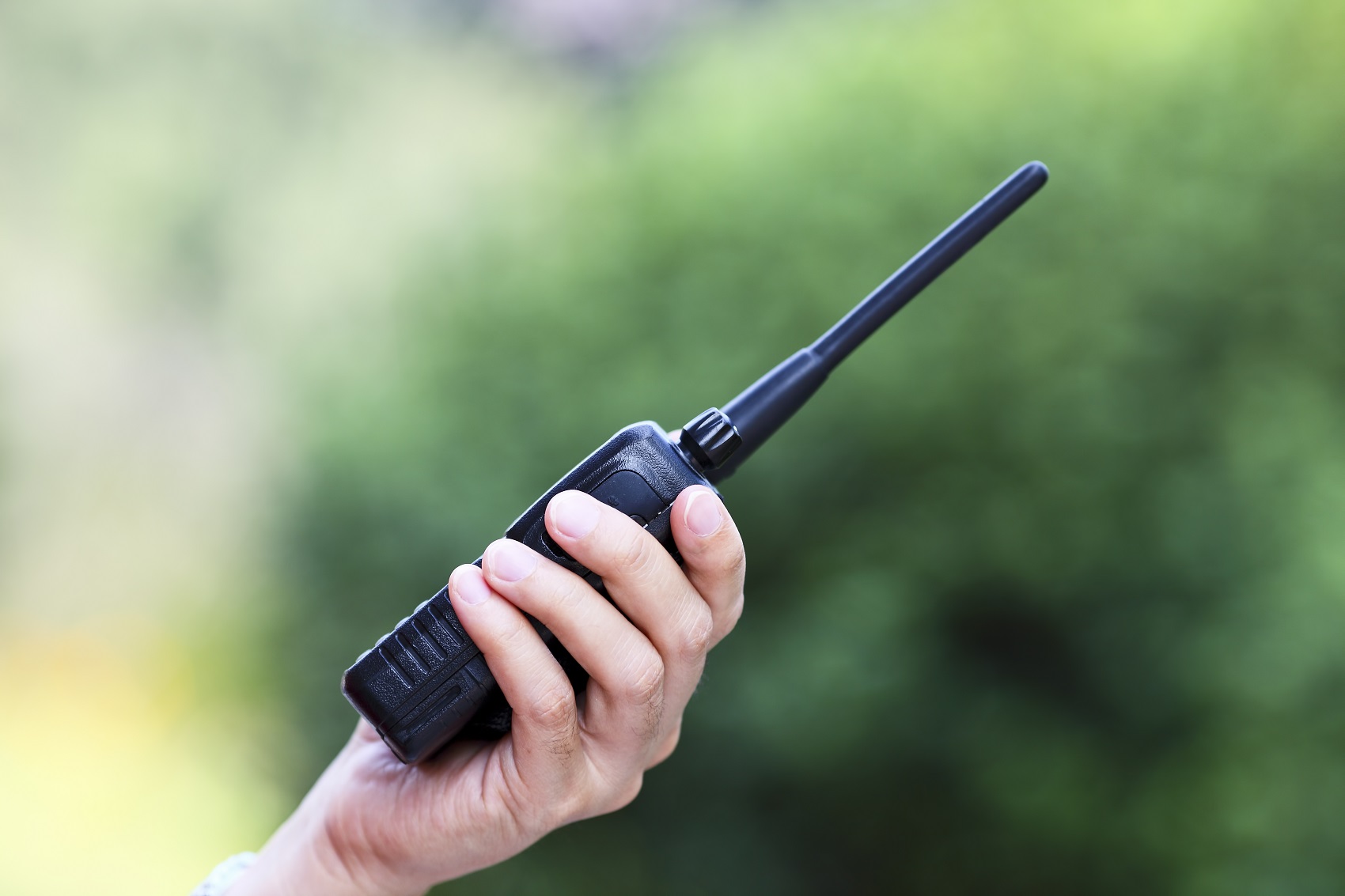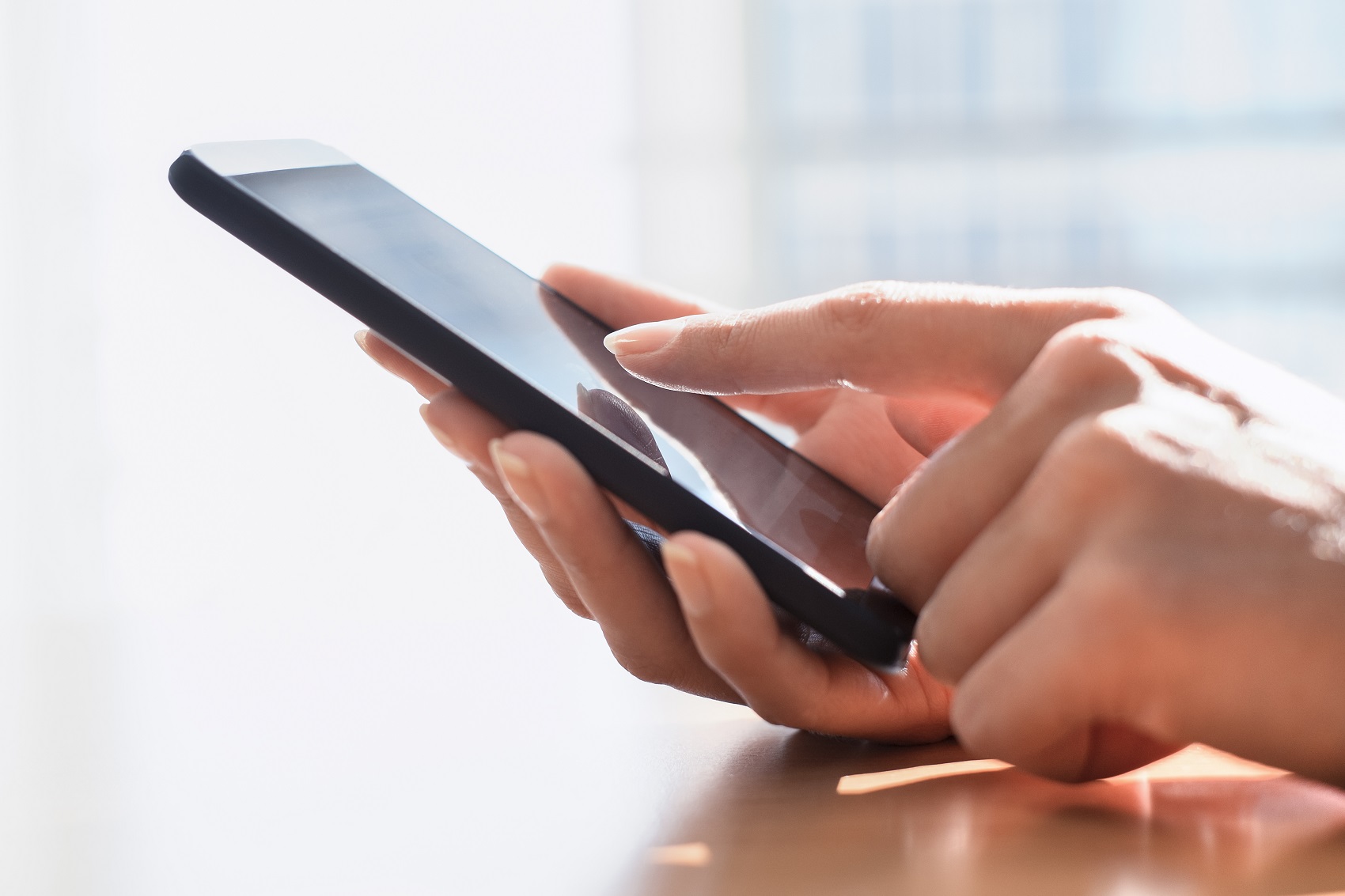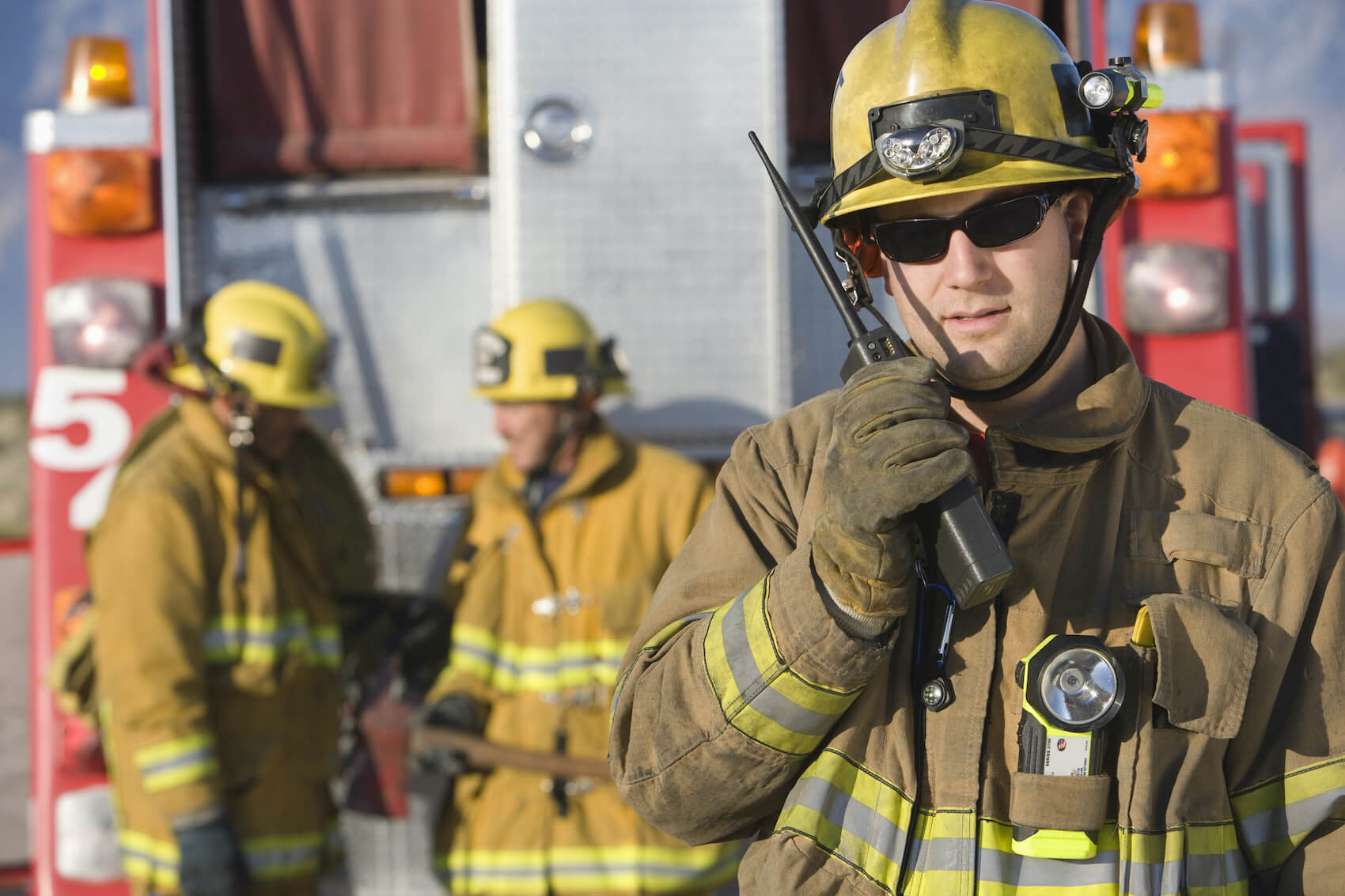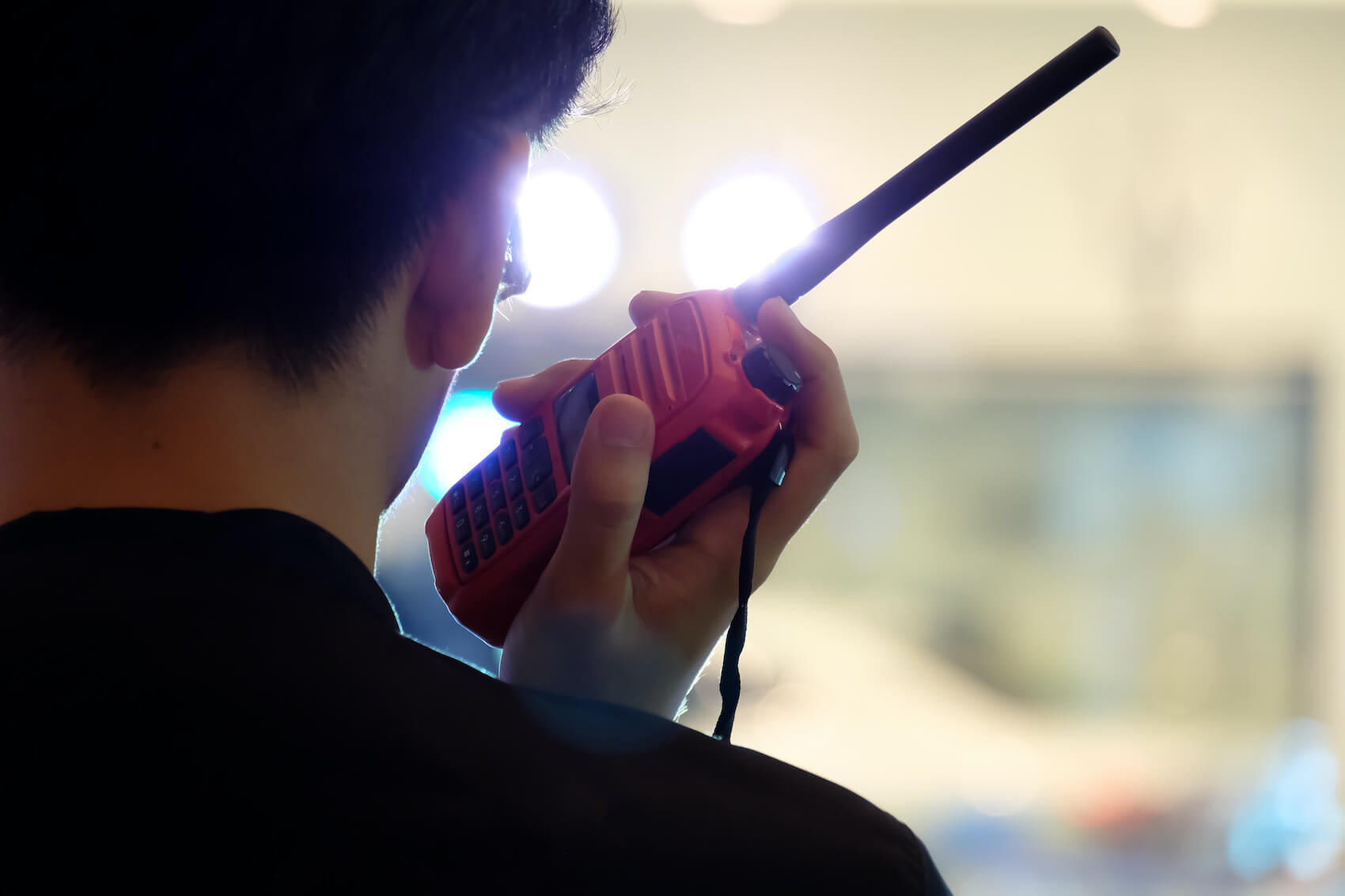 |
 |
There are several ways to communicate across Bucks County, Montgomery County, Chester County, Delaware County, PA, and the Greater Philadelphia area. Cell phones are the most common form of communication among family and friends, but when it comes to your workload and duties, are they reliable enough to convey your message?
Delivering consistent and clear transmissions when you need them most, two-way radios are a leading form of communication among several industries, businesses, and services. Our team at Metropolitan Communications is here to help workers and municipalities throughout Camden County, NJ; New Castle County, DE; and Gloucester, NJ, learn more about the differences between two-way radios and cell phones.
Benefits of Using Cell Phones for Your Business Communications

Cell phones are an all-in-one tool that virtually everyone uses. They can store vital information, like your contacts, important calendar notifications, and even minute-by-minute news updates, so you can keep your finger on the pulse of what’s going on in the world.
Cons of Using Cell Phones for Your Business Communications
While cell phones are necessary for communicating with friends and family, they’re not always the best for work and public service needs. Between the ongoing cost of data and usage, and the price of the phone itself as a piece of technology to purchase—cell phones can incur costly monthly payments.
Cell phones aren’t always 100% reliable, either. Because they work based on cell towers, sometimes connections can be weak in areas around your town or city, resulting in poor call quality and, inevitably, dropped calls.
Facial recognition and keypad access to open a smartphone’s menu no doubt provide added security, but these features could pose an issue in certain situations. Say you’re out on the job and need to report an emergency, but the camera doesn’t recognize your face; it could add unnecessary time to get the call out quickly.
The same goes for the touchpad unlock mechanism. These keys are sensitive, and in a frantic situation, it’s easy to enter the wrong code or have your fingers slip to the wrong digit on the screen, especially in work environments that require PPE like gloves, goggles, and masks.
Lastly, today’s cell phones aren’t exactly durable. They tend to break easily when dropped a short distance, which can result in a cracked screen or damaged camera, making it more difficult to operate overall.
Most cell phones aren’t built to withstand the elements and are highly susceptible to damage when excess moisture is present. Submerging a smartphone in water can leave you with a completely dead phone, or, if salvageable, a phone with functionality issues. If the damage is irreparable, the phone will need to be replaced at additional cost if not insured.
Benefits of Two-Way Radios
If your business, industry, or department relies heavily on communication, then you need a direct two-way solution. Motorola two-way radios offer clear channels, easy-to-use touch interfaces, and dual microphone systems. This trifecta of features was created with service-based businesses and emergency responders in mind, ensuring your message comes across clearly, and you can hear crisp responses even if there are loud sirens or heavy equipment in the background.
Two-way radios are also highly durable. They feature reinforced designs to make sure they’ll withstand impacts, shocks, and even full water submersions. They’re military tested in the harshest environments, so you know they’ll be able to meet your communication demands no matter the situation.
Cell Phones vs Radios
Even though they both enable on-the-go communication, there are quite a few differences between these respective handheld devices.
Durability:
- Two-way radios are built to last, even if they’re dropped. They have a stronger exoskeleton that’s able to withstand impacts, drops, and submersions. They won’t need to be replaced as quickly as cell phones in the event of any sort of accident.
- Cell phones may result in shattered screens and broken frames, which can lead to complications in using the phone’s basic functions. Not only will it result in exterior damage, but the phone could be irreparably broken and require a costly replacement.
Security:
- Two-way radios can access a variety of channels over single-band radio waves. Whether you’re reaching out to an entire department or a specific team member, you can take comfort knowing that the network is secure.
- These portable radios also don’t store any personal information on them, so that won’t be a risk if one goes missing.
- Cell phones provide several security measures that can protect your personal information. However, in the event of an emergency, these added protections could increase the time it takes to report the situation and get in touch with team members.
- Two-way radios also provide secure communication. Cell phones are susceptible to hacking and spy software that can listen in, access data, and even track the location. Many radios offer encryption technology to prevent any listening in or tracking, so communication remains private and secure.
Cost:
- Cell phones are expensive devices that require an ongoing contract with a phone provider, as well as any additional fees or plans to include with them. They can also be costly to buy, fix, or replace.
- Two-way radios are a one-time expense and don’t require contracts or monthly payments.
Reliability:
- We rely on our phones every day, but sometimes, we can’t depend on them. There’s the risk of dropped calls and poor connections.
- Two-way radios offer a direct line of communication that will be received no matter the location, regardless of whether you’re surrounded by dense concrete, radioing from the bottom of a deep valley, or traveling through a dead zone.
Audio Quality
- Sometimes, the connection for cell phones can be spotty if there’s a dead zone or the tower is far away, which can result in miscommunication. On the jobsite, miscommunication can be a source of both mistakes and potential dangers.
- Two-way radios don’t rely on towers or satellites, so the connection is always strong. They also include dual-microphone systems to make sure that the audio levels are coming in clear and that nothing is misheard.
Battery Life
- Cell phone batteries can last a long time when the phone is new. However, depending on how many applications are running, how much the phone has been used, and its background Wi-Fi activity, the battery can die fairly quickly.
- Radios are designed to last throughout the workday. Their batteries typically last up to 14 hours, but can even last over 24 hours on a single charge.
Safety
- Even though cell phones are the most common form of communication, they lead to distraction with all the features and text messages. This can cause people to divert their eyes from important tasks, like monitoring, driving, and working at higher elevations, which can cause an accident or emergency.
- Since radios are strictly used for communication, they result in very little distraction. They can easily be used while focusing on a task, thanks to the ease of access with making calls and sending messages.
- Radios ensure that in an emergency, help is always on the way. Cell phone towers do not prioritize some users over others, so in an emergency when everyone uses their phones at once, the cell tower signals become overwhelmed and stop processing signals. However, radio waves are regulated by the FCC, and the organization sets aside entire channels for first responders. Keeping dedicated channels clear of unnecessary traffic makes two-way radios a better bet when ensuring public safety.
Reduced Downtime
- When there’s an issue with a cell phone, whether it’s the device itself or there’s a problem with establishing communication, it can lead to lost time where communication is down, and important messages may not be sent or received. This can lead to bigger problems on the job and could result in lost time.
- Two-way radios don’t have the various systems and components of cell phones, so there’s very little risk for connectivity issues or a system malfunction. They have one purpose: communication. They’ll be able to achieve a connection when you most need it and ensure that you can send and receive messages clearly.
Evaluating the Costs of Two-Way Radios vs Cell Phones
When it’s time to look at your budget and determine which communication devices are best for your business and team, you’ll have a lot to consider. As you know, there are quite a few fees attached with cell phones, with the actual phone itself, the hidden fees, and the contract costs.
Two-way radios are a one-time payment. You don’t have to purchase a contract or continue to make monthly payments on the provider’s plan. Instead, you simply have a valuable tool for your team to communicate with to help you get the job done and to ensure everyone’s safety on the site.
Everyone’s heard the adage “time is money.” When weighing the pros and cons of cell phones vs. radios, this rings especially true. Two-way radios reduce inefficiencies and wasted downtime—saving this time will save money for the whole enterprise.
Why You Should Get Two-Way Radios for Your Business, Industry, or Department
Whether you work in construction, security, healthcare, retail, or emergency services, when a message or an update needs to get out, there’s no better tool than a two-way radio. They’re easy to use, reliable, durable, and cost effective.
One of the best benefits of two-way radios is their versatility. Unlike cell phones, there is great diversity in two-way radio technology that makes it possible to build the most personalized communications fleet for your workplace needs.
Two-Way Radios by Industry
For Public Safety

These digital portables are compatible with analog systems for seamless integration into a legacy suite. In addition, they operate on the P25 network, which is a first responder-specific network that allows for better cooperation among jurisdictions that may otherwise operate on incompatible channels. Other impressive benefits of the APX Series are:
- Communication Encryption: Keep private information secure with standard and custom encryption options.
- T-Shape Grip: This distinctive design makes for more ergonomic and intuitive use.
- Broadband Compatibility: In case of a poor signal, APX Series portables can route voice and data over broadband.
APX Series radios were designed for and by professionals in the industry, and as such, are field-tested to withstand the kinds of conditions that firefighters face. The same can’t be said for cell phones.
For Retail
Serve customers more quickly with the help of two-way radios. Instead of walking across a sales floor to ask a coworker a question, for instance, a portable two-way radio offers instant answers, eliminating inefficient downtime.
Retail associates don’t need all the rugged capability of the APX Series, however. This industry benefits from portables that are lightweight, intuitive to use, and discreet, which is why we often recommend the Motorola CLS Series for clear, light, and simple communications. There are other features that make the CLS Series suitable for retail environments, such as:
- Call Tones and Vibrate Alert: Audible call tones alert the wearer to an incoming transmission, and for more discreet applications, vibrate alert functions are also possible.
- Multi-Channel Operation: Multiple operating channels make it possible to connect with separate work groups, whether that’s the front office, stock room, or cashiers.
When paired with accessories like earpieces with hands-free microphones, CLS Series portables offer increased productivity for sales associates with minimal investment.
For Manufacturing
In manufacturing, it’s not uncommon for employees to interact with machinery more often than other people. Manufacturers benefit from two-way radios that offer supreme background-noise-canceling technology and a body construction with enhanced safety, like portables from the XPR 7000e Series. Other helpful features these radios provide include:
- Intrinsically Safe: This designation indicates that this radio will not pose a combustion risk in hazardous work environments.
- Man Down: The radio can automatically call for help if its built-in accelerometer senses that the wearer has fallen.
Contact Metropolitan Communications Today!
If you’re ready to begin your experience of shopping for two-way radios to use in your day-to-day operations, you can turn to Metropolitan Communications for expert guidance. Collectively, we have more than 60 years in the business!
Our team is certified by Motorola and can walk you through our lineup of portable radios while providing you with more details and insight on their range and capabilities. We’ll even help you set up your network and show you the various channels that you can use to delegate information and updates to your team or department.
We’re proud to help workers all throughout Bucks County, Chester County, Delaware County, Montgomery County, PA, and the Greater Philadelphia area. Never drop another call again! Start shopping for two-way radios that you can use throughout Camden County, NJ; New Castle County, DE; and Gloucester, NJ. Contact us today!







